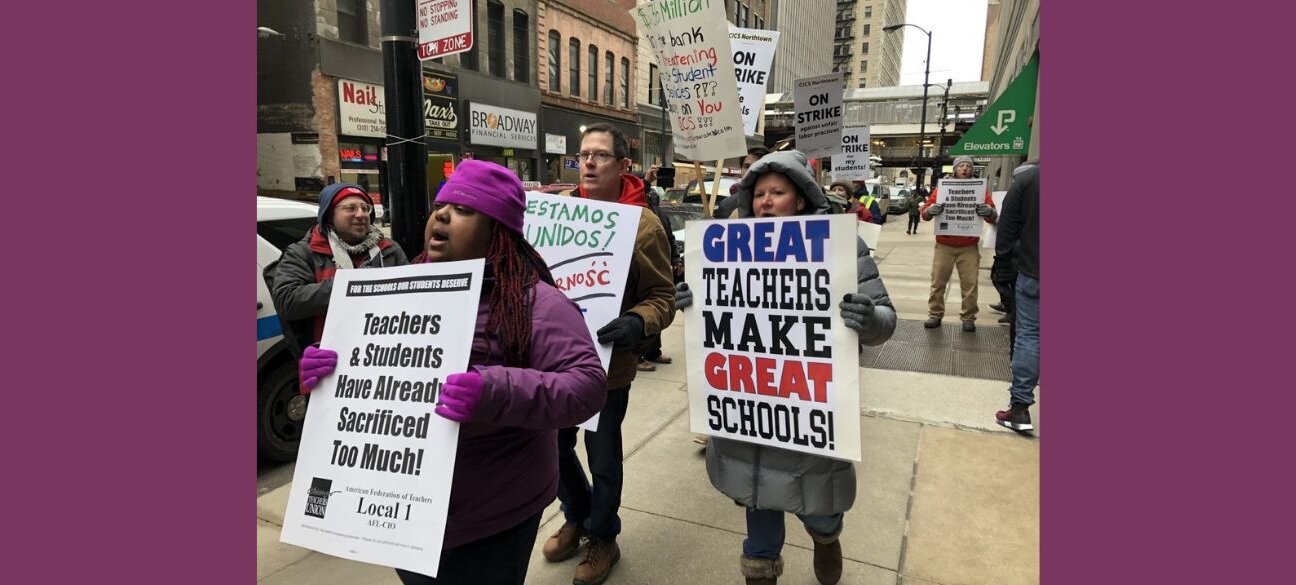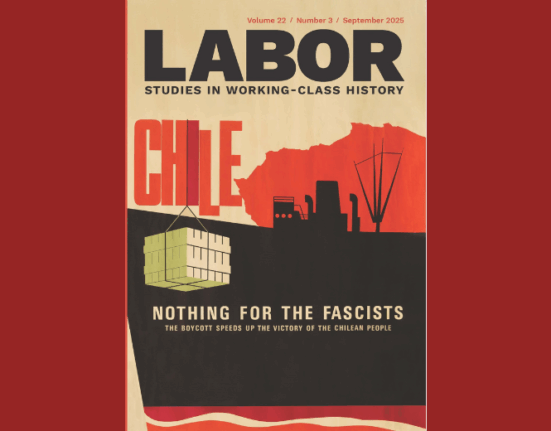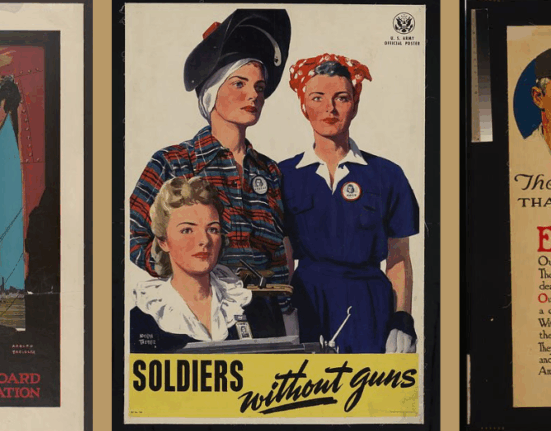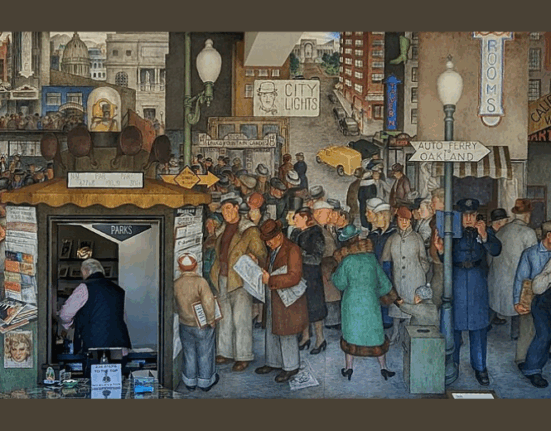“When the union’s inspiration through the workers’ blood shall run,
There can be no power greater anywhere beneath the sun;
Yet what force on earth is weaker than the feeble strength of one,
But the union makes us strong.
Solidarity forever!
Solidarity forever!
Solidarity forever!
For the union makes us strong.”
Despite the rallying power of songs like “Solidarity Forever,” an anthem of the Industrial Workers of the World written by Ralph Chapin in 1915, American labor movement has taken a beating since the 1960s. After World War II, over 1/3 of American workers were union members. Currently, in the private sector, fewer than 7% of workers are unionized, with precipitous declines in manufacturing industries.
For the last 15 years, since high school chemistry teacher Karen Lewis was elected President of the Chicago Teachers Union in 2010, it has been a model for teacher union locals and for the American Labor movement as a whole. Chicago, with over 350,00 public school students, is the third largest school system in the United States. In 2012, under the leadership of Lewis, the CTU organized widespread community support for a nine-day strike that challenged corporate educational reforms designed to weaken the union and that would have been deleterious to student learning. In 2018, the CTU expanded its fight to defend professionalism for teacher and staff in charter schools. Throughout this period the Chicago Teachers Union has been at the forefront of defending teacher professionalism, student learning, and mobilizing communities to defend public education. While Lewis resigned as President in 2014 because of illness and died in 2021, the CTU has continued its progressive tradition and model for organizing teachers, students and communities.
The 2012 campaign was successful in spite of a 1995 Illinois law that prohibited the union from bargaining over class size and school schedules and efforts by Chicago Mayors Richard Daley and Rahm Emanuel and school chief executives to close a number of public schools and replace them with charter schools. Chicago teachers responded by organizing a Caucus-of-Rank-and-File-Educators (CORE) that coalesced with community organizations and parents’ groups in a Grassroots Education Movement (GEM) and was elected to lead the local. The union was able to convince community and parent groups that it embraced their concerns about public education in Chicago and the partnership was crucial to the success of the 2012 strike.

Crucial to the teachers’ campaign was recruiting and training rank-and-file leaders to act as school strike captains and coordinators who were aware of legal rights and restrictions and could ensure that the union’s messages reached the membership and membership concerns reached the leadership. While there were coordinated strike actions, individual school chapters were given freedom to exercise their own initiatives. Picket duty included continued outreach to the community to educate about the issues and to hear and respond to community apprehensions.
Most important to the success of the strike was the ability of the union to win public support by convincing parents that the strike was about improving education for their children, especially Black and Latinx children, not just salary increases for teachers, and that the union would continue to fight for educational improvements even after a new contract was signed. The union developed and published a comprehensive plan for improving Chicago schools that included proposals for financing improvements, challenged the long history of racial inequality in Chicago schools, and explained why the corporate plan to privatize education in Chicago would hurt children.
The new contract maintained a pay scale based on education and experience rather than one based on student scores on standardized tests and it also limited the percentage of a teacher’s annual evaluation that would be based on test scores, in both cases challenging the national trend towards test prep curriculum replacing genuine student learning. Other contract provisions included a fairer teacher disciplinary process, retention and rehiring rights for teachers when schools were closed, the recruitment of more Black and Latinx teachers, salary increases and health benefit improvements that would assist in the recruitment and retention of teachers, a procedure for ensuring class cap guidelines were followed especially in special education classes, better working conditions for school nurses and social workers, and the guarantee that students would receive textbooks and instructional material on the first day of classes.
In April 2025, the Chicago Teachers Union negotiated another historic contract with the City of Chicago and its Board of Education. The new contract includes enforceable smaller class sizes; increased time for teachers to prepare lessons; additional support for students with IEPS, Individualized Education Programs; additional resources and greater access to arts, music, and sports for students in traditionally underserved communities including a $10 million annual investment in equipment, supplies, and transportation; better school maintenance which means less mold and asbestos and lead pipe removal; ecological initiatives like composting and solar panels; doubling the number of bilingual educators; doubling the number of school libraries and librarians; and hiring additional paraprofessionals to support student learning. Under the new contract, in defiance of Trump administration initiatives, Chicago schools will remain sanctuaries that protect student rights from violations by federal agencies, safe schools for LGBT+ students exploring their gender identities, and continue to teach all aspects of American history and culture.
The union’s Big Bargaining Team made up of sixty-five rank-and-file union members and including union officers and the union’s Executive Board approved the final package of proposals and sent it to the local’s House of Delegates with over 700 members.
Because of its commitment to union democracy and as a way to continue to mobilize union members, approval of the tentative agreement followed a number of steps. The union’s Big Bargaining Team made up of sixty-five rank-and-file union members and including union officers and the union’s Executive Board approved the final package of proposals and sent it to the local’s House of Delegates with over 700 members. After the delegates approved the agreement, there was a full membership ratification vote by the union’s 30,000 members and with 85% of eligible voters casting ballots, the contract was approved by 97% of the voters. Local President Stacy Davis credited the overwhelming approval vote to the union’s commitment to “democracy and engagement.”
Contract negotiations were facilitated by close ties between the CTU and Chicago Mayor Brandon Johnson, a former public school teacher and union organizer active in the 2012 strike who was elected with support from the CTU. As the result of a 2021 law, ten members of the school board and its President are appointed by the mayor and ten members are elected, many with union endorsement. When the school system’s Chief Executive Officer, who took office under a prior school board, obstructed negotiations between the new Board of Education and the teachers’ union, including filing a restraining order, he was fired.
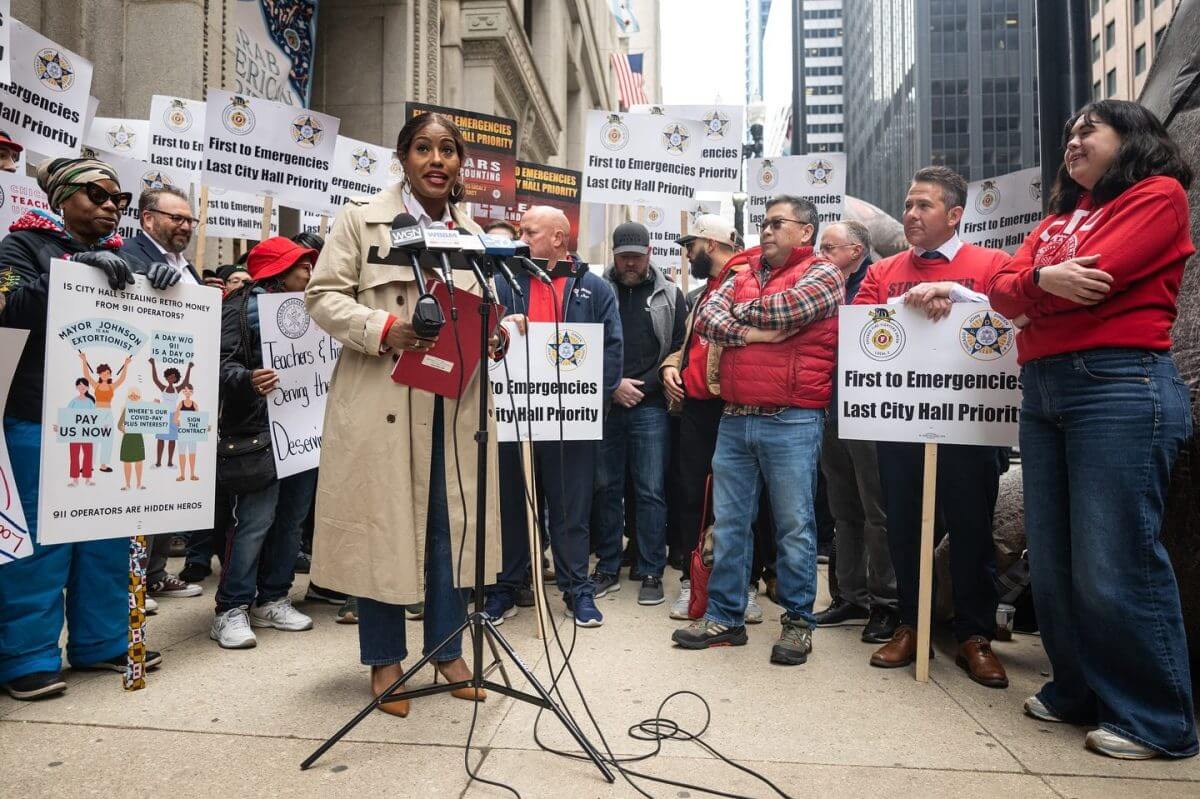
The election of the Chicago mayor, the organization of the school board, and the successful contract negotiations were the fruit of the 2010 strategy to build broad community support for the schools and the teachers’ union initiated by Karen Lewis and the Caucus-of-Rank-and-File-Educators. While negotiating its 2025 contract, the CTU continued to maintain important alliances with other municipal unions in their contract disputes with the city and by supporting community struggles. They included working for a new contract for firefighters, a campaign for clean air and water in minority communities and pressuring the Illinois state legislature to resist cuts in social service funding being enforced by the Trump administration.
Author
-
Alan Singer is a historian and teacher educator at Hofstra University, Hempstead, New York. His most recent book is Class-Conscious Coal Miners: The Emergence of a Working-Class Movement in Central Pennsylvania (SUNY Press, 2024). He can be reached at catajs@hofstra.edu

